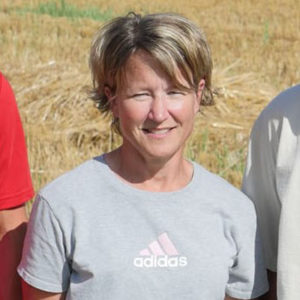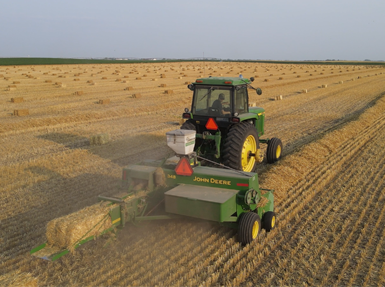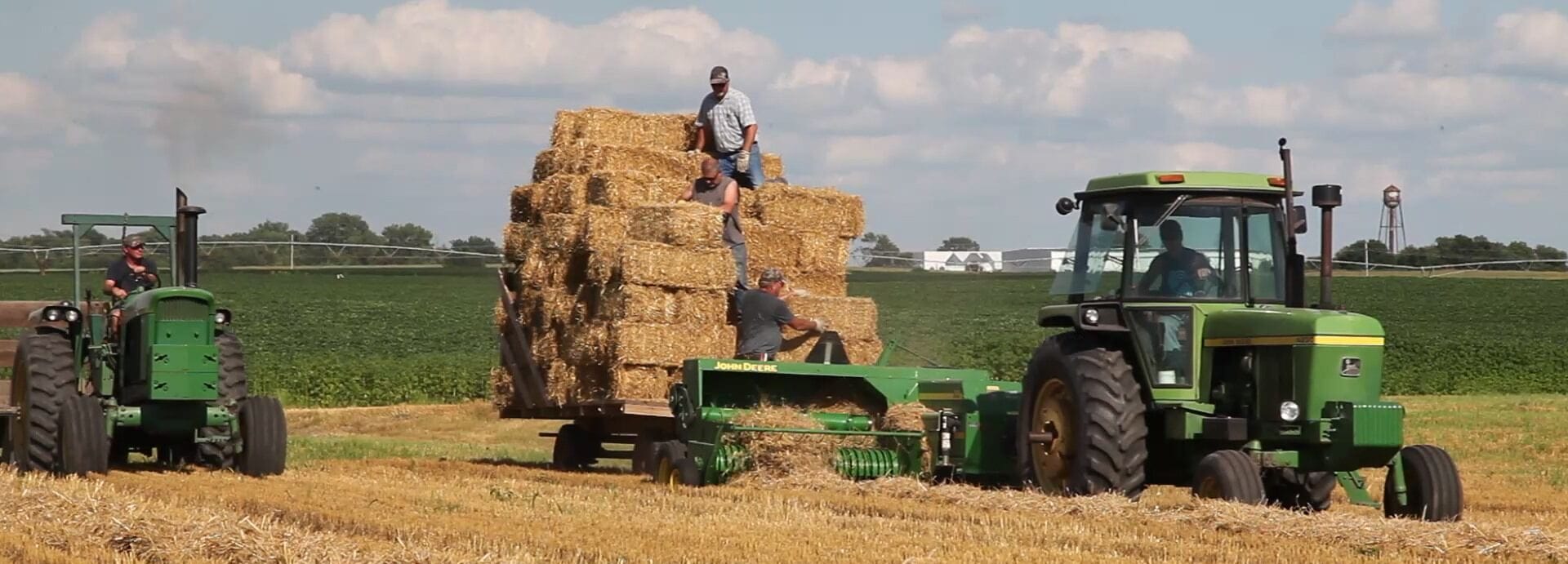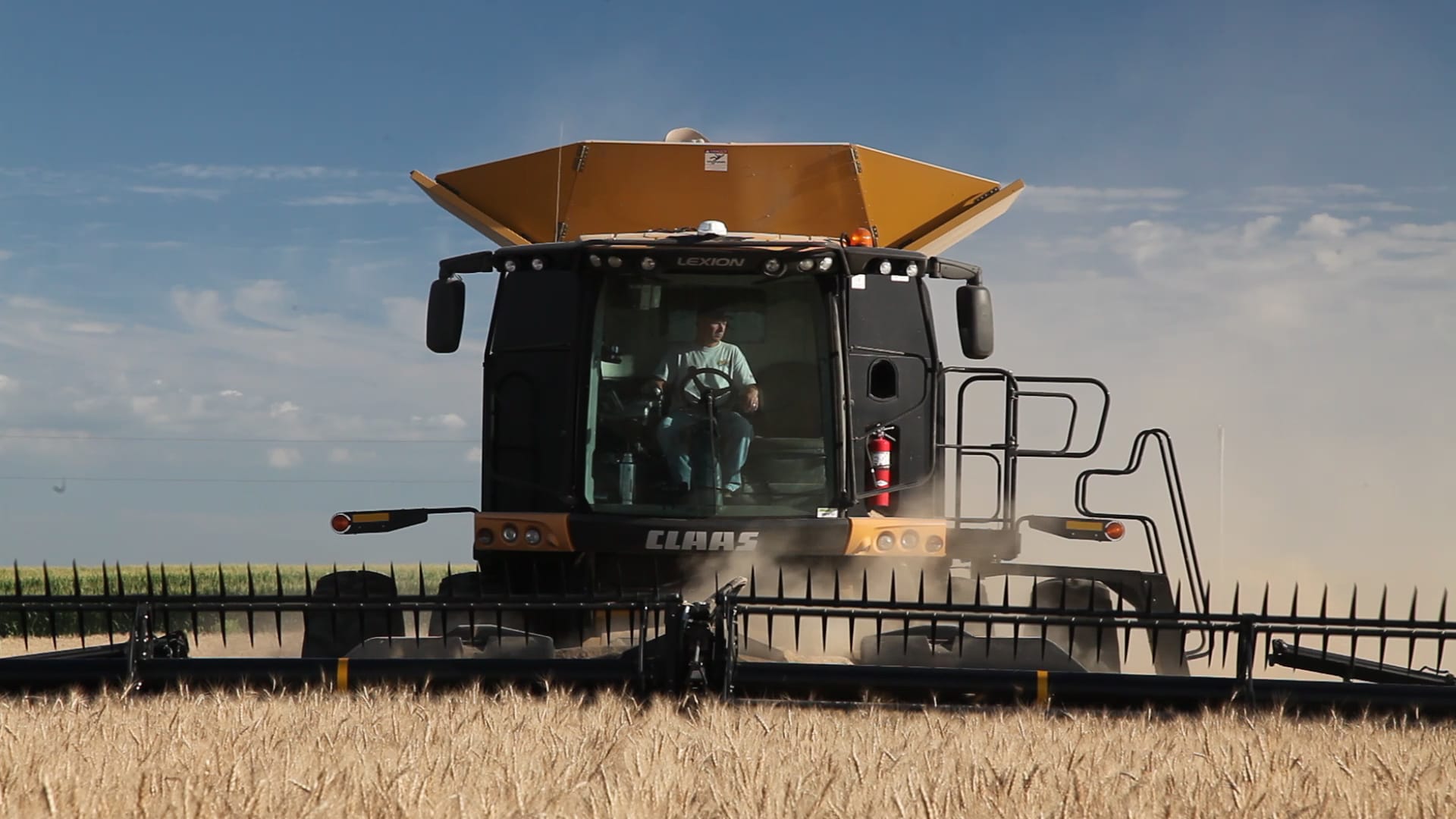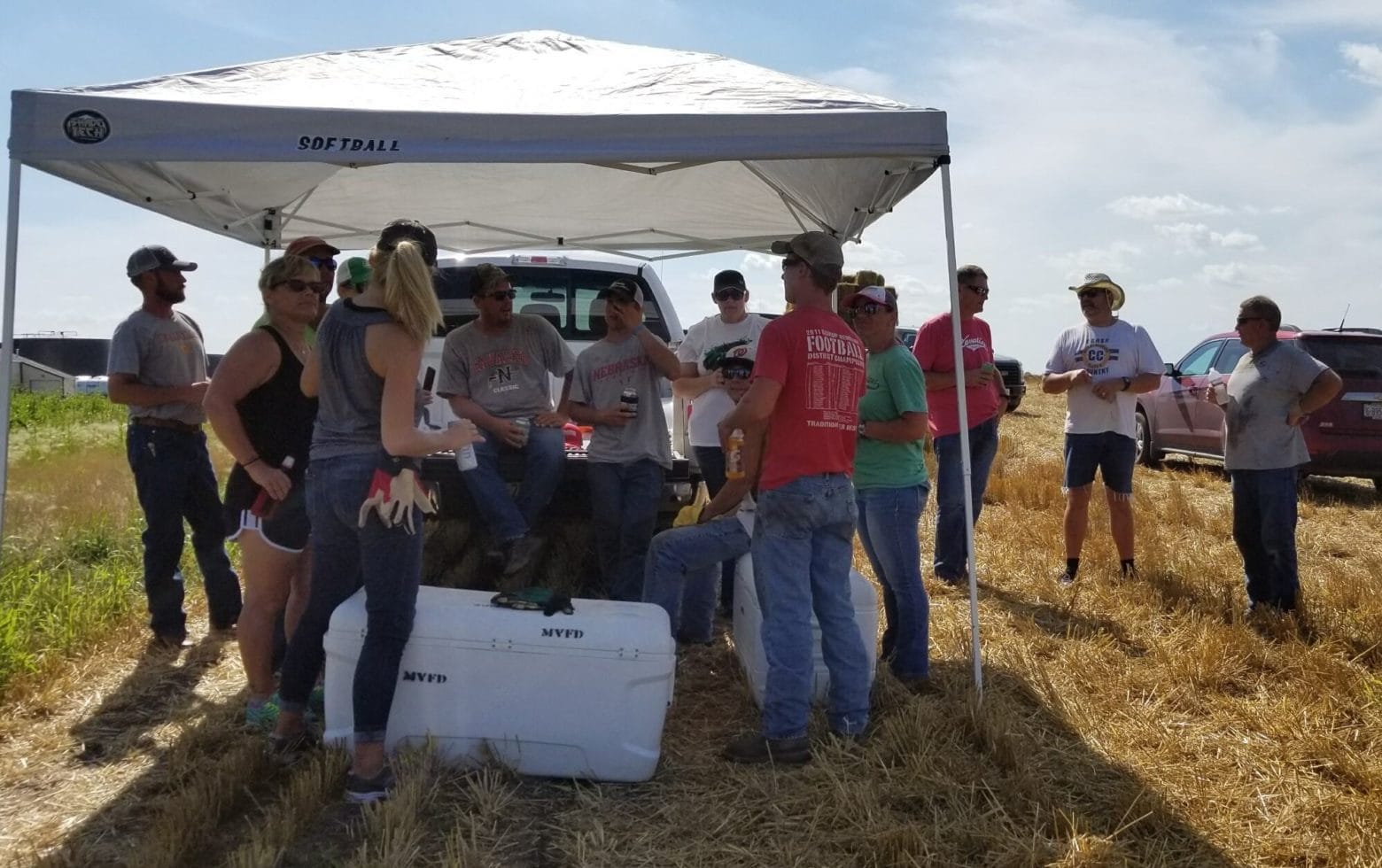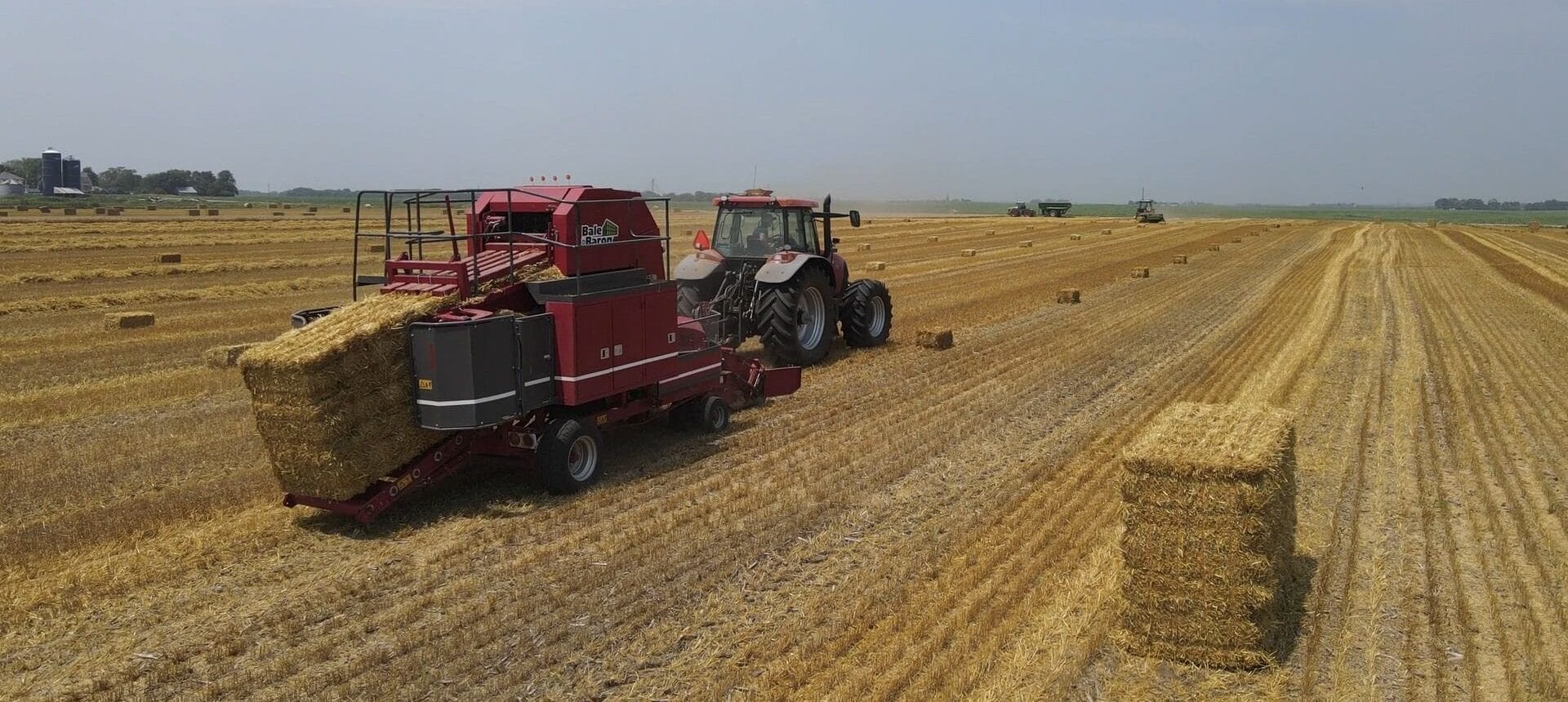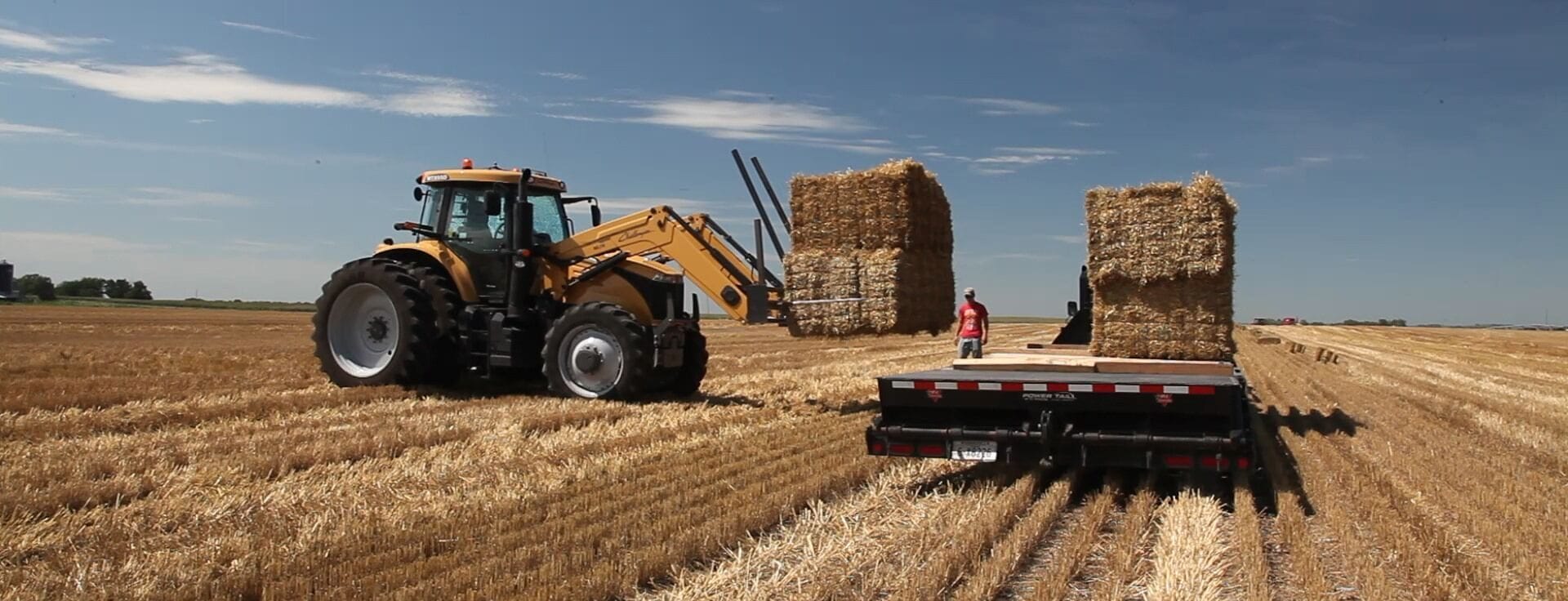Exploring Opportunities for Marketing Wheat Straw
Location plays a part in what market opportunities are available for certain crops. Angela and Kerry Knuth know this well as they navigate their highly local wheat and straw markets. They own and operate a 2,100-acre farm outside of Mead, Nebraska, where they run a corn, soybean and wheat operation with their eldest son Gregory. The location of their farm, between Omaha and Lincoln, puts them in a unique position for marketing straw.
Discovering Wheat Markets
In 2013, the Knuths were approached about an opportunity with the University of Nebraska. The university was looking for farmers to grow food-grade wheat to be milled into flour. Participants in this program were paid a premium. The offer seemed like an exciting opportunity to improve soil quality by extending their rotation while still making a profit.
That year, Angela and Kerry put 200 acres into wheat production. They continued growing food-grade wheat until the 2015 crop was infected with vomitoxin, and the university shut down the program.
Despite the setback, the Knuths decided to keep growing wheat and selling the grain to a local elevator. They also entered the straw market.
Due to their farm’s proximity to Omaha, they quickly made connections with a feed store in the city, the university’s cattle lots and the Henry Doorly Zoo. Having these markets in place and knowing the benefits to their soil health makes growing wheat an “easy” choice for Angela and Kerry.
Growing Wheat for Straw
Kerry and Angela seed their wheat anywhere from Oct. 10 to Nov. 10 at a rate of 100 pounds per acre.
To grow tall and sturdy wheat ideal for straw, they initially chose the winter wheat variety Ruth found through the University of Nebraska-Lincoln’s wheat trials. They now grow the newer winter wheat variety, Valiant, also chosen for its standability. In the spring, the wheat is top dressed with seventy pounds of nitrogen between March 15 and April 15.
The next step is two passes of fungicide, Prosaro or Priaxor, done within a two-week period between May 15 and June 10.
Kerry does the spraying himself if the fields are in a condition that allows a sprayer to run through without leaving ruts. Otherwise, the fungicide passes are done with an airplane which also applies a foliar nitrogen fertilizer, such as Coron, at the same time. The total amount of nitrogen applied is 100 pounds per acre.
Harvest, the Old Way
Harvest time is always after the Fourth of July, regularly between July 7-12. Dropping the spreader on their Claas combine lays out a nice windrow and is also very gentle on the straw. Rotary combines can chew up the straw, creating small pieces, but the Knuths like the longer straw because it is easier to bale and fluffs up nicely.
In the first years of baling straw, Kerry and Angela were lucky to have two sons with friends who provided the muscle, as loading and stacking the bales require anywhere from seven to ten people.
They also had people ask if they could “ride the rack” for old times’ sake and help the Knuths load up bales. It was so popular that they auctioned “Baling Parties” for local fundraisers – the winners provided some labor and the Knuths hosted a barbecue after the work was done.
Mechanizing Production
In 2016, a new machine dramatically changed operations for the Knuths.
Since that year, they have been hiring a neighbor who has a Bale Baron, a machine that goes through the field and scoops up the small square bales, ties them together in packs of twenty-one and places them back on the ground. This eliminates the need for big groups to tackle the labor. A payloader loads the bundles onto a flatbed trailer to move them to storage and for delivery.
Angela and Kerry noted one memorable harvest when a broken-down machine left them with 4,000 bales in the field at 8 p.m. with rain forecasted early the next morning. Using the Bale Baron through the night allowed them to get the last bale in the shed before the rain started.
“If we had done this by hand, it wouldn’t have happened,” Angela says; their bales would have been ruined.
Meeting Demand for Straw
On average, Angela and Kerry harvest 70 35-pound bales per acre or 1.25 tons per acre. In 2021, 160 acres provided an overabundance of straw, so they dropped back to 100 acres.
That didn’t provide any buffer though. The feed store they work with relies on them for square bales, so in 2023 when there was an overabundance of rain, they only produced 3,800 bales and had to truck in 2,200 bales to fulfill their contract.
To keep up with the rising demand, they are increasing their wheat acres to 150. The Bale Baron costs $1.25 per bale with an extra $.25 for the twine. They sell the square bales for $7 per bale or $5.25 per bale if bought in large quantities. Kerry adds, “We now have an income that we weren’t really expecting, and it’s from our fields!”
Location, dedication and hard work are keys to the success of the Knuths’ straw business. They have easy access to their local straw market and strive to provide the best straw to fulfill their obligations. Through a willingness to try something new, they have expanded their rotation, added to the health of their soil and made a profit.
Additional Resources
- Nebraska Winter Wheat Variety Test Results
- Winter Webinar: Where to Begin with Winter Wheat Production
- Wheat Production Handbook
- Doing the Math and Picking a Market for Straw Profitability
For more information on small grains and extended rotation, sign up for PFI’s monthly Small Grains News email newsletter.

